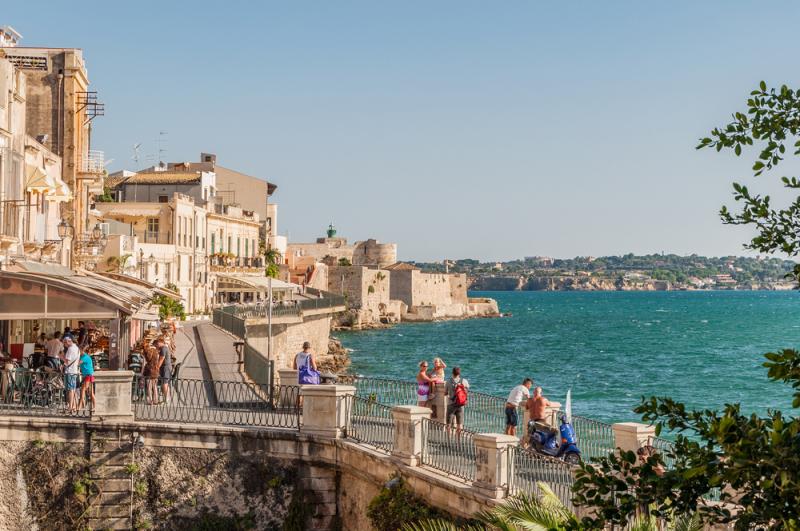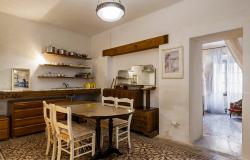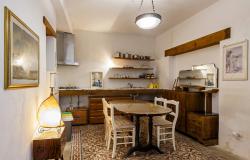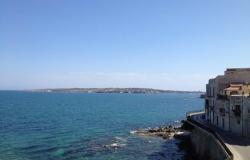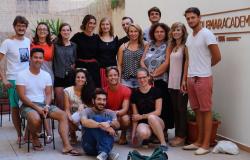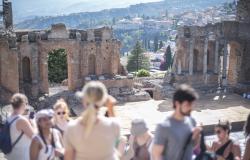Its name means ‘quail’ in ancient Greek, but the locals call it ‘the rock’ (lo scoglio): Ortygia, Siracusa’s ancient heart on Sicily’s south-eastern coast, stands on a tiny island jutting out into the sea which, within one square kilometer, contains 3,000 years of history.
The Greeks, Romans, Arabs, Swabians, Byzantines, Normans, Angioins, Aragonese, Bourbons, all called Ortygia home. Today, tourists from all over the world visit this fascinating place, a tangle of narrow streets, courtyards, dark alleys that suddenly open up onto the sea.
The 6th century BC Temple of Apollo welcomes visitors from the space in front of Piazza Pancali; it is one of the most important ancient Greek monuments on Ortygia, being the oldest Doric temple in Sicily. Nearby are the sounds and smells of the ancient Arab market, where colorful stands of fruit and vegetables, almonds and pistachios, strawberries, artichokes and pomodori pachini (a type of local tomatoes) entice visitors.
On the other side of the island, in its southern part, stand the Castello di Maniace and the Fonte Aretusa, both unmissable sites during a visit to Ortygia. The Castle of Maniace is an imposing fortress, built around the middle of the 13th century, used both as a residence and as a defensive structure. The Fountain of Arethusa is one of Ortygia’s most beautiful monuments; legend has it that the nymph Aretusa, in order to escape Alfeo, who was madly in love with her, asked Artemis for help; to save her, he turned her into a water source. As a matter of fact, the area is rich in spring waters and this was likely one of the reasons that led the first inhabitants to settle here.
Ortygia’s Piazza del Duomo is absolutely stunning. As the name suggests, this is where you’ll find the Cathedral (Duomo) of Syracuse, a Unesco World Heritage Site, along with the entire city. Originally built in the 5th century BC as a temple dedicated to the goddess Athena and later turned into a Christian basilica, it features a Baroque façade, remade after the building was badly damaged following the 1693 earthquake.
Another must-see sight in Ortygia, which will plunge you into the island’s daily life, is the historic food market, which takes place every day except Sunday starting at 7 am. Much shouting and gesticulating accompany the daily show of the island’s local bounty, from fruits and vegetables to seafood, meats and cheeses, all fresh.
Conclude your visit at the Neapolis Archeological Park, which includes the 5th century Greek Theater which could host up to 16,000 spectators; the 2nd century Roman Amphitheater, used for gladiatorial combats and horse races; the Ear of Dionysius, a 75-foot tall grotto with unique acoustics.
And this is just a taste of what Ortygia has to offer; if you have more than one day, make sure you explore the many more palaces, churches, museums, and temples of Ortygia, which Cicero described as ‘the greatest Greek city and the most beautiful of all’.
